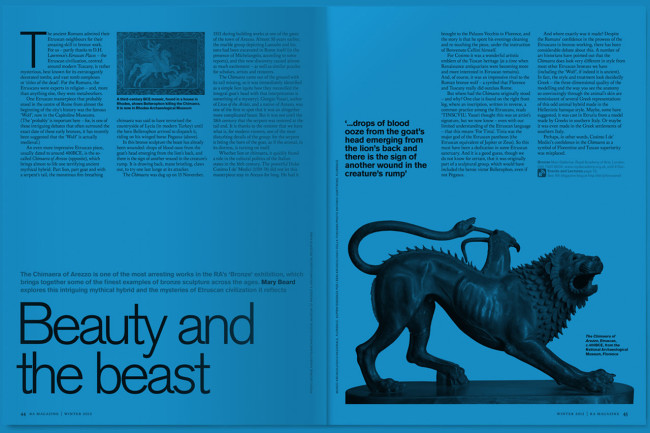Four art biographies to read this autumn
Four art biographies to read this autumn
By Michael Prodger
Published 11 September 2017
Art critic Michael Prodger recommends the best new biographies of artists and art lovers – from Renoir to Peggy Guggenheim.
-
From the Autumn 2017 issue of RA Magazine, issued quarterly to Friends of the RA.
-
-

Renoir: an Intimate Biography
By Barbara Ehrlich White
While the reputation of most of the Impressionist circle has headed upwards, Renoir’s has sunk. Proust believed Renoir changed the way people saw: “Women pass in the street, different from those we formerly saw, because they are Renoirs… the carriages too are Renoirs, and the water and the sky.” The one-time heir to Titian and Rubens is now often dismissed as too sugary, too fleshy, too ponderously sexual or sentimental. The leading Renoir scholar Barbara Ehrlich White has mined the artist’s voluminous correspondence (using more than 450 previously unpublished extracts) to depict the man in the round. He was not, she says, always easy to like; having been born lower middle-class he became politically conservative and nationalist, and feared that any association with political radicalism would lower his prices. At his best though his paintings show a featheriness in the handling of light that is both joyous and unrivalled.
RRP £24.95, hardback
-
-
-

The Surreal Life of Leonora Carrington
By Joanna Moorhead
For most of her life the journalist Joanna Moorhead had no idea that Leonora Carrington, the last of the Surrealists, was her relative. When she found out, she set off for Carrington’s home in Mexico City: the painter, novelist, short-story writer, sculptor and set designer was 89. In the course of 10 visits, varying from weeks to months, Carrington revealed her life story, from her days as a debutante in pre-war London and, through her lover Max Ernst, falling in with the likes of Picasso, Lee Miller, Miró, Duchamp and Dalí, to a wartime flight to New York and eventually Mexico, where she got to know Diego Rivera and Frida Kahlo and later became the country’s most celebrated artist. This is an unapologetically personal biography: Moorhead is fascinated by the way Carrington overturned convention to lead a remarkably full life and determined too to raise her artistic status. She is more successful in recounting the former than convincing of the latter.
RRP £20, hardback
-
-
-

Gainsborough: a Portrait
By James Hamilton
James Hamilton, an accomplished writer on Turner, has turned in this biography to an older artist who also painted his way out of poverty. Gainsborough, says Hamilton, learned early on in his career to be an opportunist and understood that ‘painting had its own special power: to create image, to make money, and to build friendship’. What emerges in this fine and empathetic portrait is a man who was as lively as his brushwork: charitable, quick to anger, fast talking, ‘very familiar and loose in his conversation to his intimate acquaintance’ as one friend put it – so loose that many of his letters were burned after his death. He was also a blusher, afflicted by what he called his ‘damned grinning trick’. Although his passion was for landscape, Gainsborough painted largely either the very rich or the very poor – and moved with ease among both. Because he resented having to paint portraits for a living he didn’t always like his sitters, on the evidence here, though they must have liked him.
RRP £25, hardback
-
-
-

The Unfinished Palazzo: Life, Love and Art in Venice
By Judith Mackrell
This is the story of one house and three women who lived there. The women are Luisa Casati, Doris Castlerosse and Peggy Guggenheim and the house is the Palazzo Venier dei Leoni on the Grand Canal in Venice, which was started in 1750 and abandoned after only one storey had been built. The women all shared a love of parties, glamour and art, and hosted everyone from Gabriele D’Annunzio and Nijinsky to Yoko Ono. Judith Mackrell recounts – somewhat breathlessly at times – their lives at the house that acted as their stage set. It is a tale full of set-pieces – Casati, dressed by Leon Bakst, with her cheetah in the palazzo’s gardens; Castlerosse flicking from an affair with Churchill to one with a married heiress; Guggenheim’s obsession with becoming the artistic doge of Venice. It was the palazzo, says Mackrell, that allowed these fabulously privileged women to be works of art in their own right.
RRP £19.95, hardback
-
-
-
Enjoyed this article?
Become a Friend to receive RA Magazine
As well as free entry to all of our exhibitions, Friends of the RA enjoy one of Britain’s most respected art magazines, delivered directly to your door.
Why not join the club?

-








